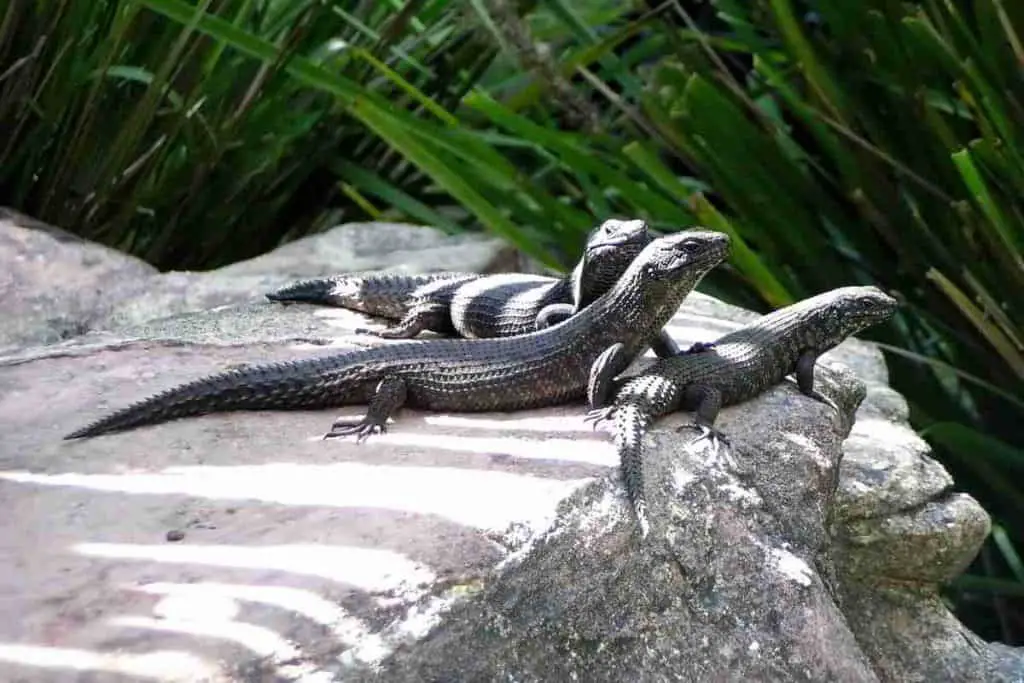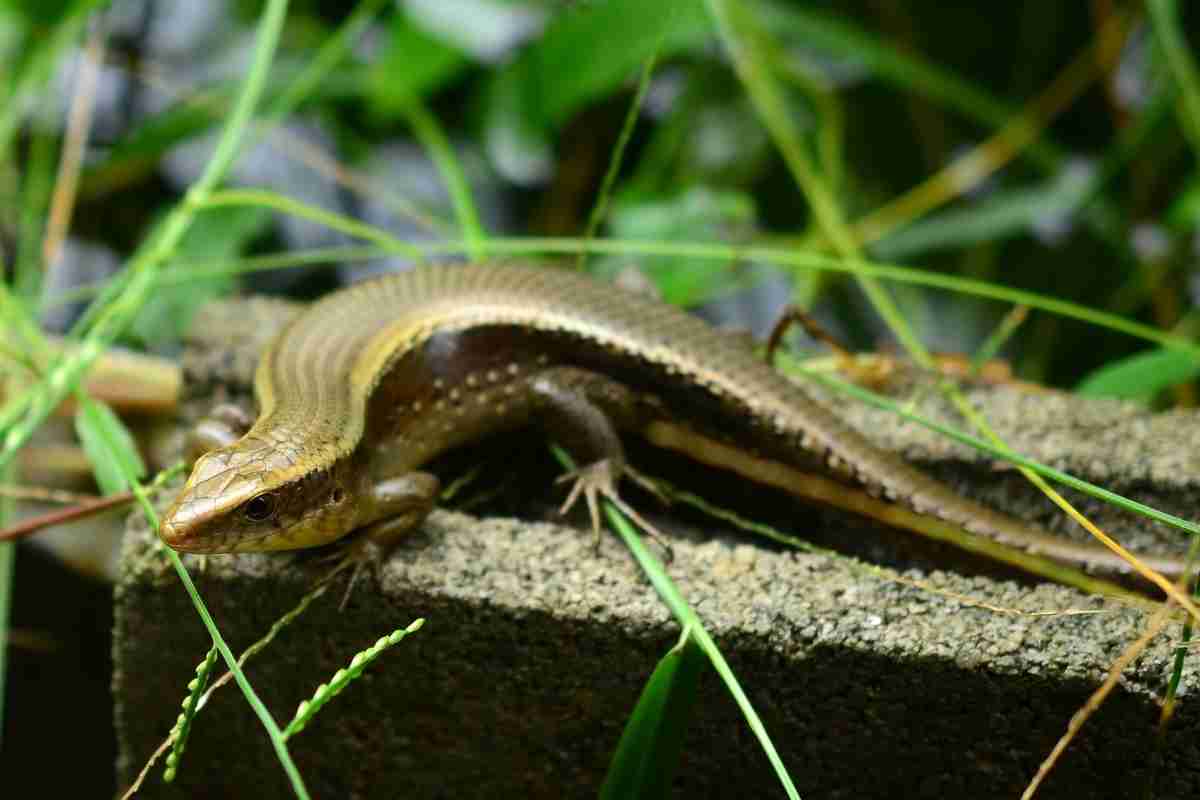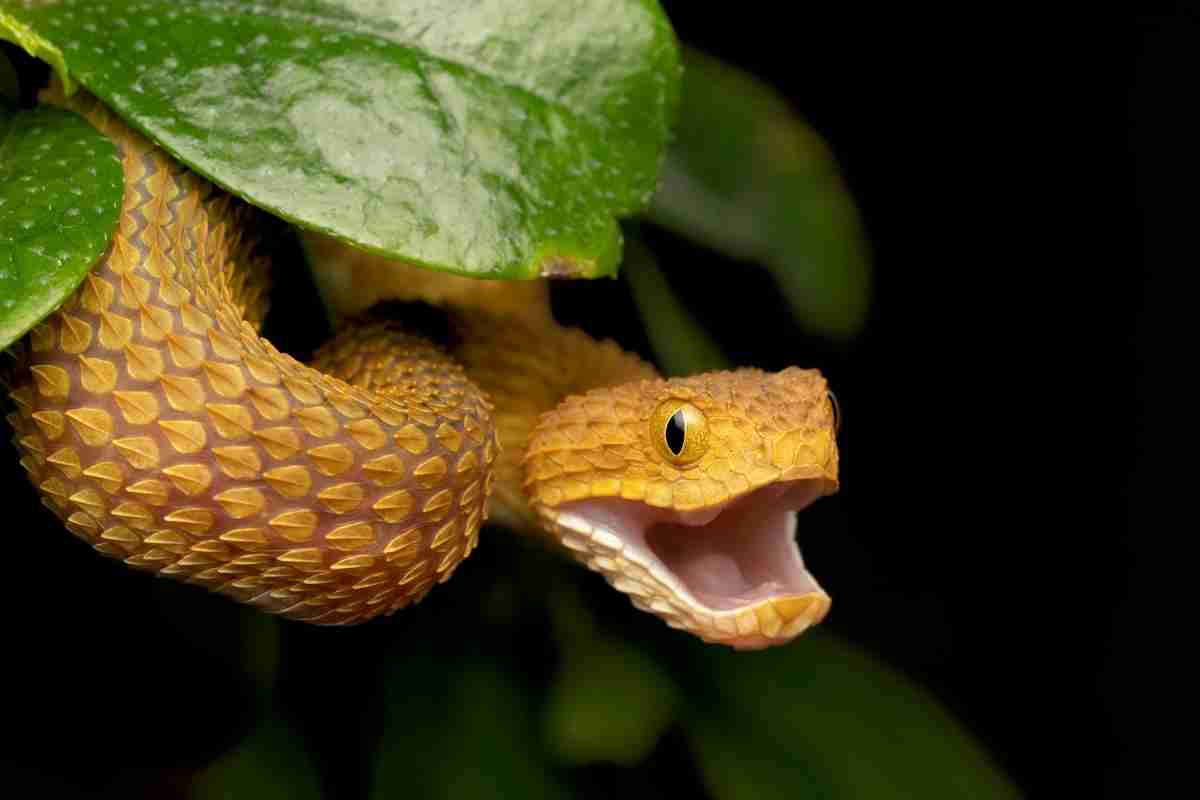Skinks belong to the Scincidae family of lizards and there are over 5,600 lizard species in the world. Among all the lizard species, scientists have discovered more than 1,510 skink species that are usually 8 inches long or less than 20 cm.
However, prehensile-tailed is the largest skink species that are 30 inches or 76 cm long. Most of them have short necks, legs, and long tails, and bodies. Some skinks species like Fitzsimon have no legs.
Skinks are great pets for people of all ages because they require less care and maintenance. Most skink species are oviparous and lay eggs in clutches.
However, are skinks dangerous? Skinks are not dangerous and are easy-to-care-for reptiles for beginners. Although skinks can bite you, they don’t carry poison, which means they are not toxic to human beings and cannot cause any harm even if they bite you.
Skinks are quiet, docile, and gentle reptiles, which make them good pets for everyone. Online research shows that skinks do not have hostile behavior. However, their jaw muscles are strong and their teeth are sharp, which means if a skink bites you, it can cause painful sensations.
But then again, there is nothing to worry about because skinks are non-poisonous lizards. Moreover, a garden skink has sharp teeth that ease the process of catching and slicing smaller prey.
In the wild, garden skinks behave quietly and passively. Even when you pick a garden skink and touch it, the reptile will rarely bite you.
In today’s post, We will talk about skinks in more detail and focus on their behavior so that you can make an informed decision whether or not you should keep them as pets.
Are Skinks Dangerous To Humans?
After doing some extensive research on skinks there’s no solid evidence, which shows that skinks are dangerous to human beings. Yes, they can indeed bite you using their strong jaw muscles and sharp teeth,
But the bite does not cause any significant harm to humans.
This means you can handle your pet safely and care for it. Remember, if you have other pets in your home, make sure you don’t allow them to get close to your lizard.
For instance, your cat may try to eat your lizard and get sick. Skink carries some parasites and microbes, including salmonella, a type of bacteria that can cause health issues for your cat.
Many people believe that blue-tailed skinks are dangerous to humans. However, this is not true so, you should erase this misconception of skink being lethal to human beings.
In general, animals that have bright color skins are poisonous because they use their color as a warning sign to predators. However, this does not mean that skinks are venomous and cause harm to humans.
In contrast, your skink pet can cause significant harm to your cat. When your cat eats a skink, the salmonella or any other parasite that gets into the digestive system causes nausea, bloated stomach, diarrhea, increase lethargy, high fever, and decreased appetite.
Related Article:
Are Blue Tail Skinks Dangerous?
Blue-tail skinks are often called “scorpions” and most people believe that they are dangerous to human beings. Although blue-tailed skinks can bite human beings, they pose no threat to them.
The reasons are that blue-tailed skinks are non-poisonous. The research of the Savannah River Ecology Laboratory shows that there is no data or information on skinks causing harm to human beings.
On the other hand, they do have sharp teeth that can lead to painful bites.
Skinks are not dangerous to humans, but they can cause harm to other animals. For example, your cat can get sick if it eats the critters because skinks carry toxic parasites, which can get into the bile duct of your cat and cause inflammatory diseases.
Blue-tailed skinks have four feet that help them run away when they feel something is wrong. They use their feet as a defense mechanism. If you try to catch a skink, it may bite you.
While the bite can be painful, you don’t need any specific treatment for it.
The blue-tailed skinks are also known as five-lined lizards. They have got the name for their beautiful color, which is more prominent when the lizard is young. When it gets older, the blue color gradually fades away.
Blue-tailed skinks primarily rely on their feet to escape predators. They have short legs that allow them to move quickly. That’s why they have an appearance that resembles small snakes.
Again, It’s safe to say blue-tailed skinks are not dangerous even if they bite you.
If you are keeping the blue-tailed skink as a pet, make sure you don’t disturb it. Avoid catching it by the tail because the skink can drop its tail for survival purposes.
Are They Poisonous?
No, as mentioned above skinks are not poisonous. They have strong jaws and sharp teeth, which are used to kill and slice the prey. However, they are not venomous and can’t harm human beings.
If skinks feel any danger or if you present any threat to them, then they will try to bite you, but this happens rarely.
Skinks are fast lizards and can run away quickly from danger or predators. Some species of skinks can even climb trees in the wild. You must not catch a skink by grabbing its tail because it will try to protect itself and break off its tail.
As mentioned above, skinks can cause problems for your other pets, such as cats. If your cat eats a skink, it will get sick and you may have to take it to the veterinarian for treatment.
So, as a pet owner, you must create a comfortable environment for the skink and other pets.
If you are keeping a garden skink as a pet, make sure you keep it in an enclosed terrarium. Normally, skinks hide under the leaves or long grass. Cats and birds are the main predators of the garden skink.
Anyway, skinks are not poisonous or venomous, which means they pose no danger to human beings and animals, except if they are consumed.
What If They Bite You?
Lizards usually have stronger jaws and sharp teeth, which allow them to chop it preys. At the same time, lizards like skinks can bite hard enough to cause pain to human beings and animals.
However, the bite of a skink is not dangerous. Generally, skinks are passive reptiles and do not present threats to their owners. “but” with that said, there are, certain things that can provoke and trigger aggressive behavior in them.
Your skink will bite you when it feels uncomfortable. For example, if you want to handle your skink but it does not want that, then get ready for a sharp bite.
Even if you want to pet your skink, you must not disturb it because over-handling can make it stressful and aggressive.
Moreover, many pet owners try to touch their skinks’ mouths, which is a wrong handling practice and must be avoided. If you put your finger in front of your skink’s mouth, it will bite you.
This is very simple and easy to understand. Skinks, by nature, are not aggressive, but if you try to provoke them, they will defend themselves.
Furthermore, a skink can bite you when it is hungry or require some food. That’s why you must take care of the skink diet. If you have a baby skink, then you must feed it daily.
If you have an adult skink, you should feed it one or two times a week.
Some skinks like blue-tongued ones are food lovers, and if you have a blue-tongued skink, make sure its diet is balanced. It is because they are more prone to health conditions like obesity.

Signs Of Aggression
Before we tell you about the signs of aggression in skinks, it is essential to know that male skinks are more aggressive than female ones. With a male skink, your chances of getting bitten are increased.
That’s why you have to keep this in mind when buying a skink.
Some breeds show more aggression than others. For example, the blue-tongued skink will often bite you if you try to disturb it. Hissing, body flattening, puffing, wide-open mouth, and flicking out the tongue are primary signs of aggression is skinks.
Main Signs Of Aggression In Skinks:
- Hissing
- Body flattening
- Flicking out the tongue
- Appear to be bigger
Hissing is the main sign of aggression in most skink species. So, if your skink is hissing, don’t get close to it. Otherwise, it will not resist to bite you that can cause inflammation or pain.
Most skinks also flatten their body as a warning sign to their owners. When they flatten their body, they pose more danger.
Likewise, skinks will puff up to appear bigger and make their predators run away. Puffing themselves up is also one of their defensive mechanisms against predators.
If your skink opens its mouth wide towards you, make sure you back off.
Most often, a skink opens its mouth wide and hisses simultaneously. If your skink is flicking out its tongue, you must leave it alone. It is always a good idea to let your skink alone because there is no point in disturbing a passive and docile skink.
Avoid Getting Bitten
Do you want to avoid getting bitten by your skink? If yes, then don’t disturb your pet at all. Even if you want to handle your pet and care for it, you must ensure it is not hissing, puffing, or opening its mouth wide in your direction.
So, if you see any of these signs, do not get close to it.
Logically, it makes sense to leave your pet alone. Your duty is to care for your skink pet in the best possible way.
Feed your skink once or twice a week and make sure you include slaters, moths, crickets, earthworms, grasshoppers, cockroaches, and spiders in its diet regimen.
One of the reasons that the skink can bite you is hunger. The behavior is more common in blue-tongued skinks. Again, feed your pet well so that they remain calm and comfortable.
Doing so increases your likelihood of handling them without any problems.
Although the bite itself does not lead to any significant damages, if you are still afraid of getting bitten, you should buy a pair of gloves, such as falconry gloves or gardening gloves.
Wearing gloves can help you handle your skink properly.
Skinks are the most prominent lizard species in the world. Most often, people avoid keeping skinks as pets because they have misconceptions about them.
If your skink perceives threats, it will trigger its natural instinct i.e. either bite you or try to run away.
You must avoid threatening, scaring, or putting your pet in uncomfortable situations. Otherwise, it will try to protect itself and during all this, your skink can get injured.
Generally, reptiles produce hormones that trigger the fight & flight response mechanism, which enables them to run away from you or bite you with their strong jaws and teeth.
Skink Bite Treatment
Research shows that the North American lizards and snakes are mostly non-venomous. A bite from a lizard is a scary experience for most pet owners, particularly for beginners and kids.
However, lizard bites, in general, do not lead to severe health problems.
Unlike snakes that can leave teeth marks or a wound, skinks’ bites do not cause any major problem for pet owners. However, when a skink bites, it is essential to take some precautionary measures right away.
Skink Bite Treatment
- Clean the bite
- Applying direct pressure
- Use a plaster (If Needed)
- Tetanus shot (if necessary)
Don’t wait for the inflammatory signs and painful symptoms. Although you may feel that the pain is mild, sometimes, it can get severe. Compared to other lizards that can inject venom during the bite, you can interact with skinks safely.
If you feel there is inflammation in your skin because of the bite, make sure you mark that area with the pen and then try to get rid of inflammation or swelling by applying direct pressure on the area to reduce the blood flow in the veins/arteries.
Clean the bite and wash the wound for at least 7 minutes to get rid of swelling in your skin. Some people recommend getting a tetanus shot after a skink bite.
However, this is not necessary because skinks are non-venomous and do not pose danger to you. Skinks have a pleurodont structural mechanism, which means their teeth are attached to the jaw bone.
The teeth are small in size but sharp enough to give you a painful bite. Remember, skinks used their sharp teeth to chop or slice their food, including insects like earthworms and crickets as well as plants like collard greens and kale.
Usually, the teeth are not intended for biting humans and other animals. This makes these lizards safe for humans.
Conclusion
So are skinks dangerous “no” not really, Skints can be amazing pets just as long as there are cared for correctly? If your skink does show any aggression there’s usually a reason for this.
As before if your skink shows any aggression wear gloves this way they can not hurt you when they bite. Although there are small don’t be fooled by this, they can still give you a nasty bite if provoked and it can hurt if you’re not careful.
With that said, this is the same risk, you take with any reptile. Species of any pet reptile can cause some damage if or when they bite, the bottom line is, to be prepared.




